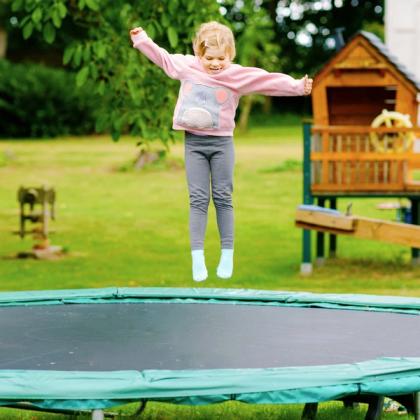Ep 123 – Proprioception and sleep for children with additional needs

00:00
00:00
Posted 19 Sept 2024
Dr James Waldron, Dr Naomi Fox
In episode 121, care and consultations for children with additional needs, and how to help these children and their families, were discussed. In this episode, Dr James Waldron is again joined by Dr Naomi Fox. Here, they look at harnessing the power of proprioception to improve behaviour and sleep and reduce stress in children.
Key references
Key take-home points
- Occupational therapists look at a person’s everyday activities to see what they find difficult and why, and to offer strategies to help make it easier.
- With children, assessment can be made through play, using both standardised and observational assessments.
- There are some practical strategies that can be put in place to help families cope with issues such as "meltdowns".
- Proprioception is body awareness and provides feedback about limb position. This is a key concept that can be harnessed to help improve behaviour and sleep and reduce stress.
- Linear movements such as rocking can be calming, whereas rotational movements can make a child more alert. This is related to movement receptors, such as the otolith in the ear that give us our sense of balance.
- Some children with additional needs, such as those with autism or attention deficit hyperactivity disorder, may have motor or coordination difficulties.
- “Heavy work” or movement activities give children proprioceptive input through joint receptors. This sends signals through the thalamus and brain stem, enabling a person to feel more regulated and better able to concentrate and focus.
- Increasing body awareness in turn increases stability, postural control and fine motor skills.
- For families who can buy equipment, a gym ball can be useful to improve proprioception. Without equipment, options are self-hugging, putting gentle pressure through the shoulders when seated or pressing against a wall.
- Mouths are also very sensitive body areas, so crunchy snacks such as apples can also provide proprioception cues.
- Stimming is a common self-soothing behaviour for children with autism, and that ties into proprioception input. There is only a need to try to stop stimming if the child is hitting themselves or biting things; otherwise, many stimming behaviours are calming for the child. In these cases, the behaviour needs to be replaced with something, such as a "chewie" to replace the biting.
- Sleep has a huge impact on both the child and their family; a child is more likely to sleep if they have had heavy-movement proprioception cues as part of their bedtime routine.
- Weighted blankets can also be useful; importantly, guidelines recommend using one for no more than 20 minutes and removing it once the child falls asleep.
- Routines, environment and limiting screen use at bedtime are also very important to help improve sleep.
- Motivational interviewing can be used to help children understand why sleep is important, and what strategies might be useful.
- In some locations, there are referral systems for sleep systems; these can be through social services or occupational therapy, depending on local set-up.
Create an account to add page annotations
Add information to this page that would be handy to have on hand during a consultation, such as a web address or phone number. This information will always be displayed when you visit this page